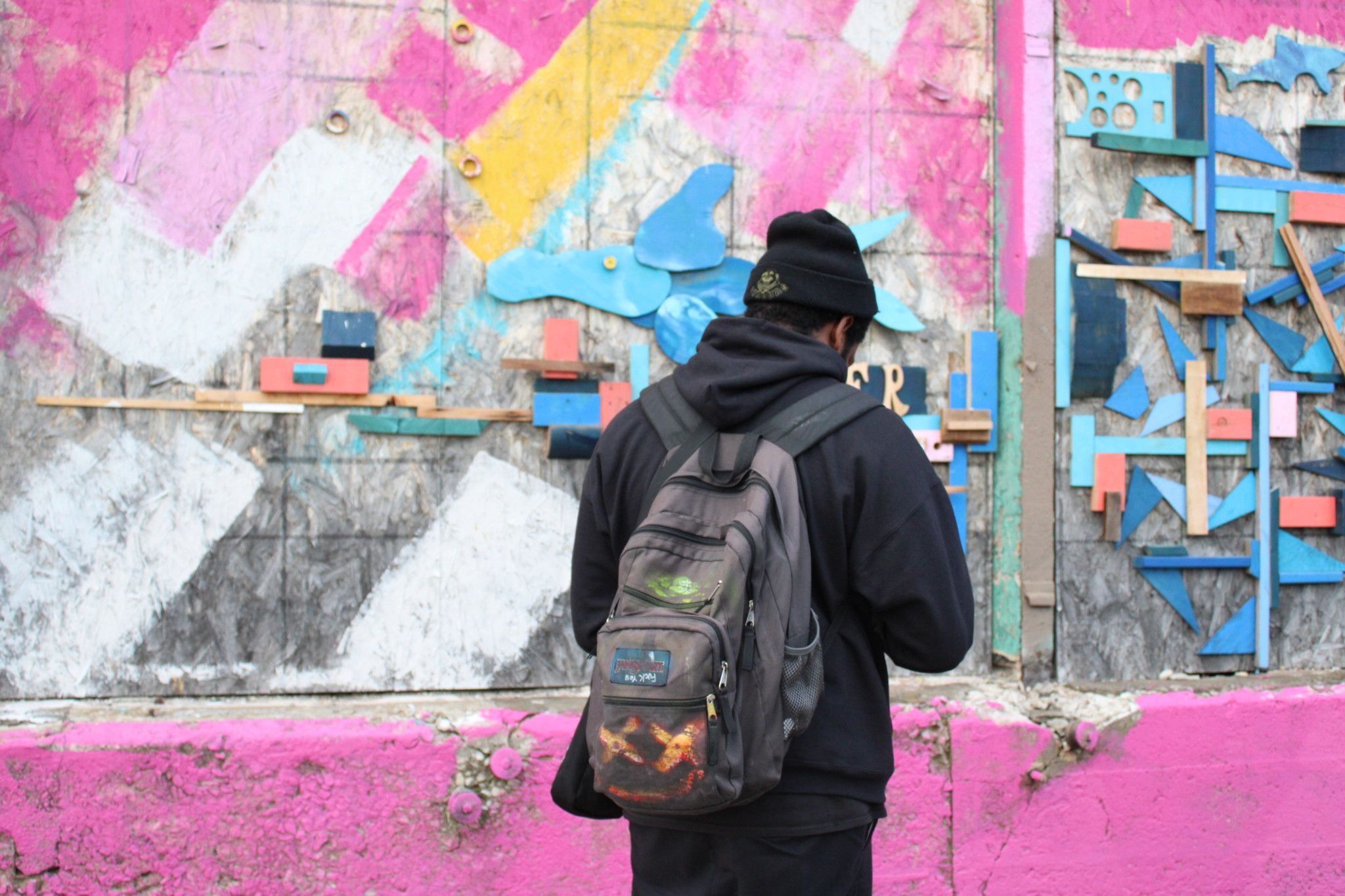It’s hard to imagine a Chicago without street art. So many of us take for granted the creativity and risks sticker artists, writers, and muralists take for the sake of self-expression and adding character to the city. Some people across Chicago—especially in our local government—see street art as vandalism, but rarely consider the deeper meaning it bears for the artists themselves. Street art isn’t just graffiti: it’s a place to reclaim space and share ideas.
“Bleh the Buddha” is a sticker artist native to the Southwest Side of Chicago. He’s known for his character, “The Punk Buddha.” Even though he’s only twenty-one years old, Bleh has already spent the past seven years developing his personal style through multiple artistic mediums. Bleh uses his art to comment on society and people, and to express his own emotions and experiences as a young man navigating Chicago and the world. He refers to his street art as “public enhancement.”
“The public space is ours, so let’s put our art on it,” said Bleh when we first met in the fall of 2018.
Bleh first created his trademark character “The Punk Buddha” while in high school. He was fascinated with juxtaposing the aggressive nature of punk against Buddhism’s peacefulness. Since then, he has used “The Punk Buddha” as a storyteller to confront race, social norms, and mental health.
Some of his most famous pieces are his CTA ads and posters. He marked priority seating for people with social anxiety, reminded customers to not blink or breathe on trains, and even made his own Coca-Cola ads and Orange Line maps. Though these quirky pieces have landed him in jail for a night and with a hefty fine, he’s proved that he’s not afraid to try new things and take risks doing what he loves.
Bleh finds the powerful influence advertising and media have on groupthink and behavior especially interesting. In that vein he has created some propaganda style works, both supporting and opposing “The Punk Buddha,” all in response to the various ways street artists and people of color are portrayed in America. Bleh said, “People deny this little Buddha thing without seeing past the surface level. Fear is controlling them and they refuse to understand the symbol. They’d rather just deny the existence of this guy, like we don’t want him, he’s corrupting our streets.”
Although Bleh the artist likes to distinguish himself from “Bleh the Punk Buddha,” he uses both his art and the character to express emotions, experiences, and his relationship with depression. He says, “I guess in a sense it’s good… I can relate to the average person who possibly thinks of Bleh as this higher being, but it’s like no, we all bleed the same.”
Although he may be well-known for his stickers and ads, Bleh has been diving into other art mediums over the past year. He has custom-painted jackets for friends, as well as his own clothes and shoes. He has collaborated with Overboard Cruisers, drawn comics with his friends, and plans to make zines and plastic Punk Buddha keychains. And when it comes to his street art, you can spot wooden Buddha heads in addition to his stickers.
“Bleh the Buddha” is one of Chicago’s most unique emerging artists. He is observant of the world around us. He is not afraid to try new things or fall down after a big jump. With his art, he not only connects with his fans and people on the street, but is also able to validate his own existence. “It’s like that one voice we still have,” Bleh said. “It’s a place where I can be myself in a way.”
Evan Dye is starting her senior year as a Journalism major at DePaul University. When she’s not riding her bike Diego, she’s snapping pictures of graffiti across Chicago. Evan is fascinated with people and likes to write about their unique perspective, as well as interesting events happening in the city.

